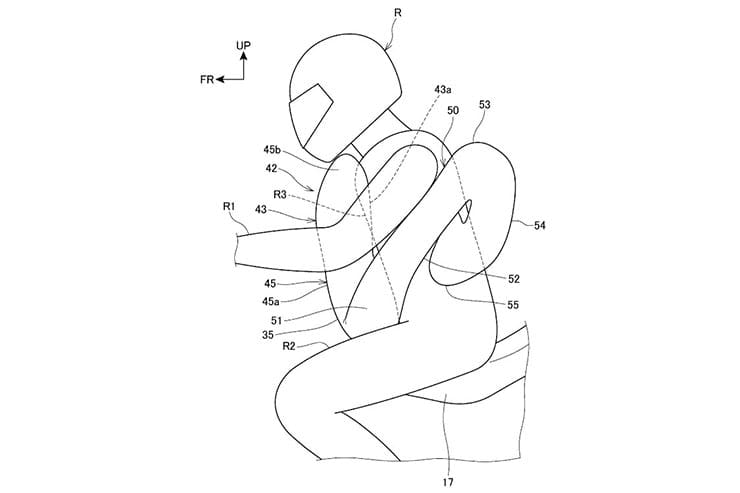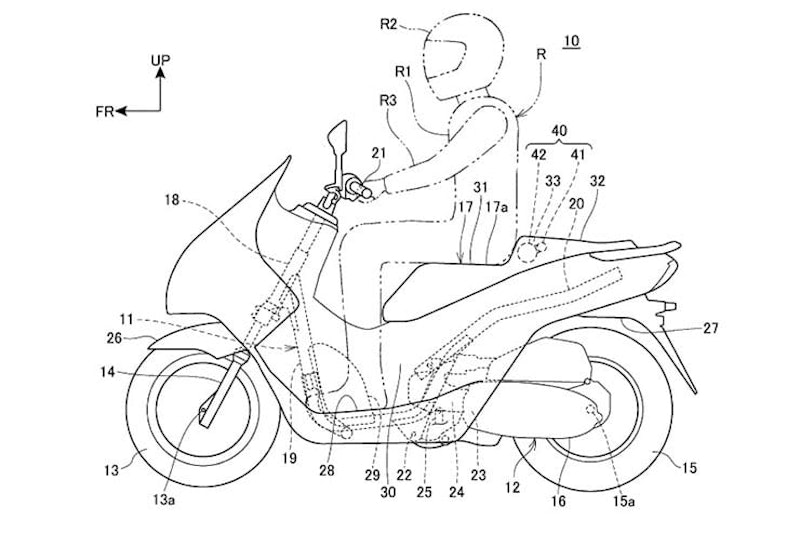Honda working on innovative motorcycle airbags
By Ben Purvis
Motorcycle Journalist
27.02.2023
Airbags have been the norm in cars for decades and most now have several of them to protect occupants from every angle – but on bikes the idea appeared to have stalled with the launch of the Honda Gold Wing airbag back in 2006.
Now, though, Honda is pursuing a new line of airbag development that could finally bring motorcyclists the same sort of safety benefit that car users have enjoyed for so long, addressing not only the shortcomings of the Gold Wing airbag system but also the barriers preventing wider adoption of airbag-equipped clothing.
At the moment, airbags for bikes can be split into two distinct forms. There’s the Gold Wing’s car-style bag – an idea that hasn’t been adopted elsewhere – and the growing number of clothing options with airbags built-in to leathers.
The Gold Wing’s airbag has proved effective, with plenty of anecdotal evidence from riders who’ve been saved from injury by the system, but it has limitations. As a front-mounted bag, it’s real use only comes frontal crashes – typical SMIDSY ones, for instance, where a car pulls into the bike’s path. Combined with the Gold Wing’s armchair-like seating position and low centre of gravity, which means the rider’s posture is predictable and they’re less likely to be thrown over the bars, it works well in that type of crash. However, it’s proved impossible to adopt on other types of bike, where riders move around more and higher C-of-G means they’re likely to flip forward in the same type of accident, possibly missing the airbag altogether.
Meanwhile, clothing-mounted airbags like those used by MotoGP riders are effective but rely on you choosing to wear them. They’re also inevitably limited in size by the fact they have to be built into jackets or leathers.
Honda’s solution to these problems has emerged in a host of new patent applications, showing several different takes on the same idea. The core concept is to have an airbag that’s built into the seat of a motorcycle but wraps around the rider in the event of a crash, detaching from the bike in the process to protect the user even when they’ve been thrown clear.
The various designs differ in the shape of the airbag itself and in where it’s mounted. In some versions, the bag is in the front of the seat, bursting (somewhat disconcertingly) from between your legs when it’s triggered. Other variations on the idea mount the airbag in the centre of the seat, shaping it to wrap around the rider from behind. There are also several different shapes for the bags themselves, but all share the same idea of gripping the rider, either around the torso or arms, and then detaching from the bike. That means if you’re thrown clear, the airbag goes with you.
There are several advantages over existing systems. Compared to the Gold Wing’s fixed airbag, the new design should work in a wide array of different crash scenarios, not just frontal accidents. And unlike clothing-mounted airbags, there’s no limit on the size of the bag or its inflation system since the latter remains on the bike even when the airbag detaches.
That means the system could use an explosive, car-style inflator system, which will remain in the seat at all times and can provide a vast amount of gas in a fraction of a second to inflate the airbag before your body hits anything solid. Once inflated, the patent documents describe how the airbag is sealed, using heat to melt closed, and detached from the inflator, allowing it to go with the rider rather than staying with the bike. Like a car’s airbag, there’s a valve built into the bag itself to allow it to deflate at a preselected speed, absorbing impacts in the process.
While the existence of the patent documents is no guarantee that the idea will reach production, the sheer number of applications Honda has made around this concept suggests it’s a project in receipt of substantial investment.
Honda has publicly stated its intention that by 2050 there should be zero traffic collision fatalities involving its bikes. While much of the work towards that goal involves preventing crashes rather than mitigating their effect, using rider-assist and sensor technologies in the process, the airbag idea shown here is certainly a valuable additional route towards that goal.
Share on social media:

